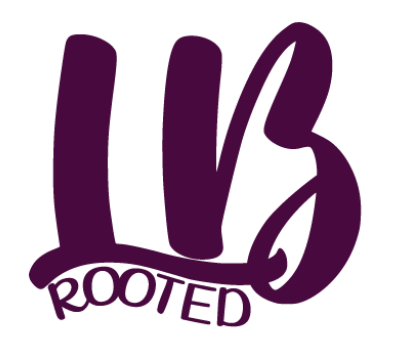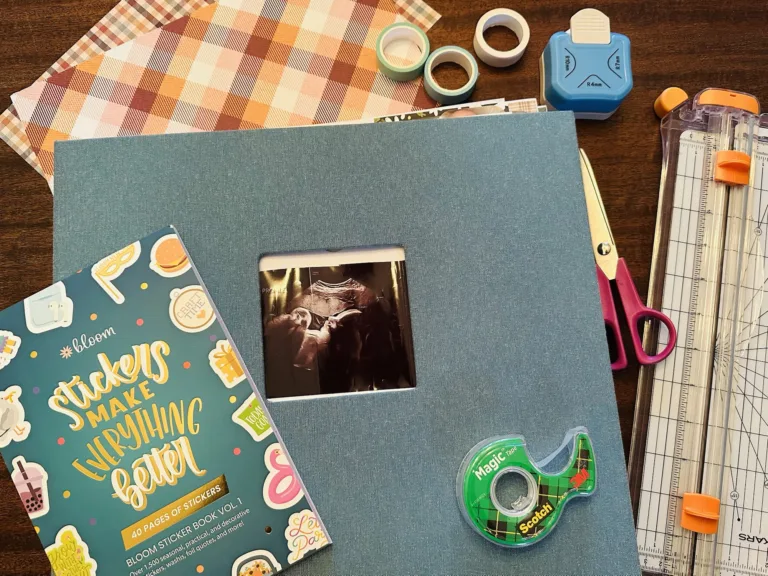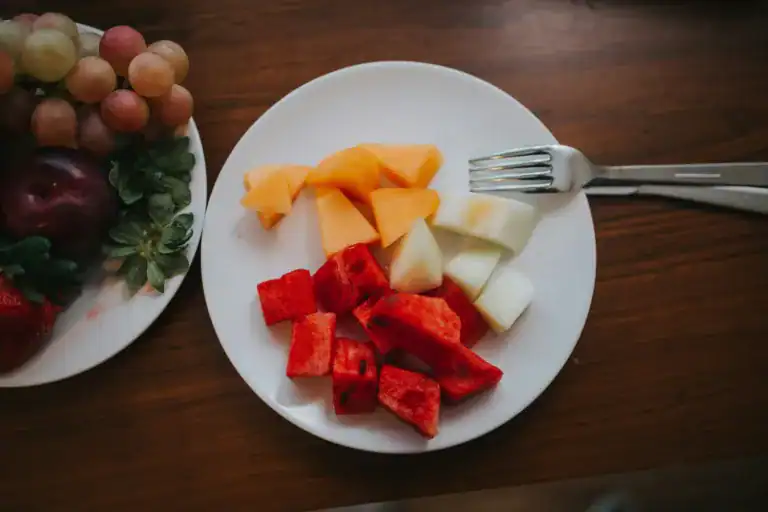The #1 Survival Guide for Going Dairy-free While Breastfeeding
Picture this: Picture this: You’ve finally found your rhythm with breastfeeding. The latch is working, your baby is feeding, and for a brief moment, you breathe easy—until the fussiness, the rash, or the tummy trouble shows up.
When my pediatrician suggested dairy could be the issue for my baby, I felt overwhelmed. After months of pregnancy food restrictions, now I had to give up cheese, too?
But I didn’t expect how going dairy-free would become a powerful part of my postpartum glow-up. My baby was calmer. And I learned how to nourish both of us in a way that felt empowering, not restrictive.
If you’re navigating a similar journey, this guide is for you. We’ll discuss what dairy intolerance looks like in breastfed babies, how to swap your favorite foods, and the simple changes that can help you glow from the inside out without giving up the foods you love or the confidence you deserve.
Disclaimer: I am not a medical professional. This is not intended to be medical advice, please consult your physician before trying any recommendations in this post. This post contains affiliate links, where I may make a small commission off a purchase with no cost to you! All opinions are my own. Cover photo by Dave Clubb on Unsplash
Table of Contents
My Journey Going Dairy-Free While Breastfeeding
At first, breastfeeding was smooth sailing for us. My son latched easily, and his diapers looked exactly like they should. But not long after, I noticed signs that something wasn’t quite right. He became extra gassy, uncomfortable, and his stool had that tell-tale mucus and color that often points to a food intolerance.
Our pediatrician suspected dairy. She handed me a pamphlet outlining common culprits and mentioned that many infants outgrow dairy intolerance by 6 months.
I was so discouraged. I had just finished a pregnancy complicated by gestational diabetes, which meant months of restricting carbs—and now I had to give up cheese too? I was devastated. But once I made the switch, I realized: going dairy-free wasn’t nearly as hard as I feared, and had benefits for me also!
Why Going Dairy-Free Can Support Your Postpartum Glow-Up
Going dairy-free might begin as a way to help your baby feel better, but don’t overlook the benefits it brings you, too. While this guide focuses on how dairy can affect your little one, it’s important to recognize how this shift can support your own postpartum glow-up.
Many moms find that cutting out dairy leads to less bloating, clearer skin, and smoother digestion. It can also naturally encourage healthier habits, like eating out less and cooking nourishing meals at home more often. Those changes? They add up fast.
And here’s something powerful: making this choice for your baby often becomes the first step in making more empowering choices for yourself. You’ll feel proud of what you’re doing—and that confidence can spark change in other areas of your life, too.
So, as we explore the impact of going dairy-free for your baby, hold space for your own transformation. Because this glow-up? It’s about both of you. 💛
Spotting Dairy Intolerance or CMPA in Breastfed Babies
If you’re considering going dairy-free while breastfeeding, it’s important to understand the why. There are two main types of reactions your baby might have to dairy: sensitivities and allergies.

What’s the Difference Between Dairy Intolerance and Dairy Allergy?
Let’s break down the three types of dairy sensitivities!
1. Lactose Intolerance
Lactose intolerance is quite rare in infants. It occurs when the body doesn’t produce enough lactase, the enzyme needed to break down lactose, the sugar in milk. But unless your baby has a rare genetic condition like congenital lactase deficiency, lactose intolerance is unlikely to be the cause of their symptoms¹. Most babies, including breastfed infants, can digest lactose without issue.
Cow’s Milk Protein Intolerance (CMPI)
Regarding dairy reactions in babies, not everything falls under the “allergy” label. Many babies experience some form of dairy intolerance. It’s not an allergy, but rather a non-allergic hypersensitivity to cow’s milk. Unlike CMPA (cow’s milk protein allergy), CMPI doesn’t involve the immune system, but it can still make your baby uncomfortable².
Cow’s Milk Protein Allergy (CMPA)f
Now let’s talk about cow’s milk protein allergy — one of the most common food allergies in infants and young children. CMPA happens when a baby’s immune system mistakenly sees proteins found in cow’s milk (like casein and whey) as harmful invaders and launches an allergic reaction to fight them off³.
This reaction can happen for breastfed babies because small amounts of cow’s milk protein from your diet make their way into your breast milk⁴.
For simplicity, I will refer to both CMPA and CMPI as “dairy intolerance” throughout this post.
Possible Symptoms of Dairy Intolerance
Symptoms can show up hours—or even days—after exposure. Some may overlap with colic or reflux, so it’s important to speak to your pediatrician.
- Skin Discoloration/Irritation
- Colic
- Bloating and Gas
- Reflux/Spit-up
- Vomiting/Diarrhea
- Reluctance to Feed
- Failure to Thrive
Severe, life-threatening symptoms may appear within minutes to hours if a baby has CMPA. Call your doctor immediately if any severe symptoms arise⁵.
For me, it was hard to differentiate whether my son’s gassiness and discomfort were normal or if there was something more causing his symptoms. After going dairy-free while breastfeeding, I realized how much dairy truly affected him.
Going Dairy-Free While Breastfeeding: Food Swaps
Once your pediatrician confirms the need for a dairy-free diet, the idea of overhauling your meals can feel intimidating. But here’s some good news: it’s easier than you think with the right swaps.
Plant Milk Swaps (By Use)

- Coffee: oat milk/cashew milk -creamy and rich, steams well
- Baking: almond/soy -less likely to alter recipe flavor
- Smoothies: coconut/almond- goes better with fruit flavors
- Sauces: coconut/cashew milk- thick and creamy
Butter Swaps
Coconut oil: My go-to in most baked goods and recipes. The Fudgiest dairy-free brownie recipe is one dairy-free recipe with coconut oil!
Dairy-Free Margarine: Be cautious—many brands still contain whey or casein, so read labels closely.
Cheese Swaps
Nutritional Yeast: Adds a cheesy flavor, great in pastas and sauces.
Cashew Cheese: Haven’t tried it yet, but it’s highly recommended by others.
Yogurt and Ice Cream Swaps
Coconut Milk Yogurt– This is the best for eating as-is.
Almond Milk Yogurt – Good for replacing yogurt in some recipes without altering flavor (like smoothies).
Ice Cream:
Ben & Jerry’s Non-Dairy Line So Delicious brand—tons of flavors and easy to find.
Hidden Dairy to Watch For
These sneaky ingredients often contain milk proteins:
- Whey
- Casein and Caseinates
- Lactalbumin
- Milk solids
- Milk powder
What About “May Contain Milk” Warnings?
If your baby has CMPA, avoid all possible sources of milk. For mild intolerances, some moms find their babies can handle foods processed in facilities with milk. Always check with your pediatrician first!
Going Dairy-Free While Breastfeeding: Snack Ideas

When you are going dairy-free while breastfeeding, it is easy to focus on all the foods you can’t have. I was surprised to discover many packaged snack options without dairy. Here are some treats that you can enjoy safely (remember to always double-check labels)!
Bobo’s Oat Bites, Apple Pie Stuffed
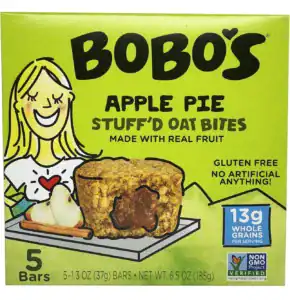
These oat bites are great for those cravings during late-night feeds. I ate countless amounts of these during my early days of going dairy-free while breastfeeding. If apple isn’t your thing, try some of the other delicious flavors!
Skinny Pop Dairy-Free Cheddar Popcorn
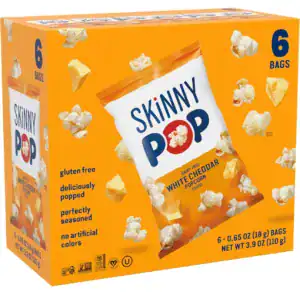
This popcorn is made with whole grains and is free from artificial flavors or preservatives. As a bonus, it’s also gluten-free!
MadeGood Soft Baked Chocolate Chip Cookies
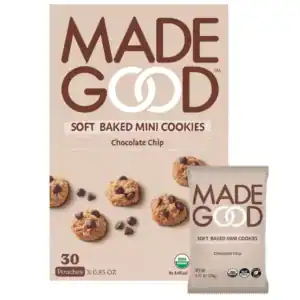
These cookies are made in a dedicated facility that is free from the top nine allergens, making them a great option for moms going dairy-free while breastfeeding. I love how they are also safe for school snacks.
REESE’S Plant-Based Peanut Butter Cups
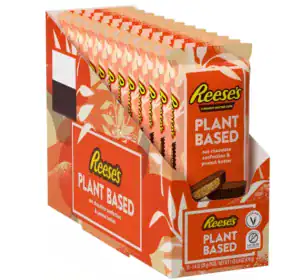
I love how many top snack manufacturers are coming out with allergy-friendly options. These oat chocolate cups make this classic treat safe for those avoiding dairy.
Nature’s Bakery Double Chocolate Brownie Bars
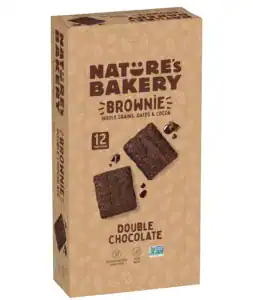
Here’s another healthy option, with no nuts or high fructose corn syrup. Quick snacks like this make going dairy-free while breastfeeding a breeze.
The Good Grocer Snack Variety Pack
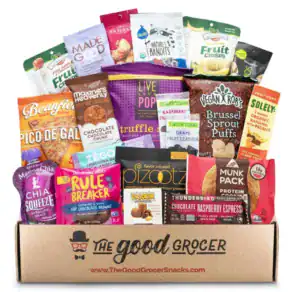
If you want to try a variety of dairy-free snacks, this snack pack is a great option. It also makes a great gift for a new mom.
Whole Food Snack Options
Are you trying to make your grocery list after going dairy-free while breastfeeding? Here are some staples you can keep in your pantry to make your life easier.
- Fresh Fruit: apples, bananas, strawberries, kiwis
- Fresh Veggies: cucumbers, carrots, celery
- Avocado Toast (make sure to use dairy-free bread)
- Edamame
- Hummus with carrots or pita
If you are trying to lose weight while breastfeeding, focus on eating high-protein, unprocessed, whole foods.
Going Dairy-Free While Breastfeeding: Cooking
Making your food can simplify going dairy-free while breastfeeding, but it can be hard to know where to start. These recipe sources make the transition easy!
Where to Find Dairy-Free Recipes

GoDairyFree
GoDairyFree has an awesome collection of completely dairy-free recipes. It is also a great resource for all things dairy-free. You can find guides to eating out, grocery lists, tips on understanding food labels, and much more!
Skinnytaste
While Skinnytaste is not specifically a dairy-free recipe site, they have an option to filter recipes by diet. Most dishes made at our house lately have been by Gina at Skinnytaste, so definitely check them out!
Dairy Free For Baby
Dairy Free For Baby is a website packed with recipes and information about going dairy-free while breastfeeding, from a mom who did it herself.
Healthy Little Foodies
Healthy Little Foodies focuses on meals that are baby-led weaning and toddler-friendly. They also have a dairy-free category, which will help introduce solids without dairy.
How to Tell If Going Dairy-Free Is Working for Your Baby
Here’s the part that takes patience: it can take up to 3 weeks for dairy to fully clear from your system and for your baby’s symptoms to improve⁶. That’s why I recommend keeping a symptom journal.
Keeping a Symptom Journal for Your Baby

If you have a suspicion that your baby has an allergy, keeping a symptom journal may be a game-changer! It’s a simple way to connect the dots between your baby’s symptoms and what you consume. This journal will also make it easier to speak to your pediatrician about your baby’s symptoms.
What to Track in a Symptom Journal
1. Your Meals and Snacks: You will want to note any top allergens you consumed.
2. Baby’s Symptoms: Bowel movements, gas, bloating, and anything else you notice.
3. General Notes: Note any changes in routine, baby’s mood, or anything that stands out.
Format Options
Your symptom journal does not need to be fancy. Pick something that you will find easy to keep up with. When you are dairy-free while breastfeeding, you aren’t likely to have a lot of free time to spend on journaling. Here are some easy options for your symptom journal:
- Paper Notebook
- Notes App
- Google Sheet
- Google/Word Document
- Printable Template
Don’t give up if you miss a day of journaling. With consistency, you’ll gain an understanding of your baby’s symptoms.

Signs Dairy-Free Breastfeeding Is Helping
If going dairy-free while breastfeeding is working, here are some improvements you may notice!
- Less gassiness and bloating
- Fewer blood-streaked poops
- Better weight gain
- Reduced crying and fussiness
- Less spitting up and reflux
- Better sleep
- Easier Feeding Sessions
What If There Is No Change?
If symptoms persist after 3 weeks, ask your pediatrician about other culprits. About half of babies with dairy sensitivity also react to soy⁶. You might need to try a soy-free diet next.
When May I Reintroduce Dairy?
Most babies grow out of dairy intolerance between 6-12 months. With your doctor’s go-ahead, you can slowly reintroduce dairy and monitor your baby’s response.
My son can tolerate dairy now that he is eight months old, but he is still slightly sensitive to dairy. For this reason, I still try to avoid eating large amounts of dairy.
Final Thoughts
Navigating going dairy-free while breastfeeding can be tough. Whether you’re here because your baby has been diagnosed with dairy intolerance or you’re trying to rule one out, just know that you are doing an amazing job. While this path is overwhelming at first, remember that it gets better and that you are not alone.
You’re not just figuring out how to avoid dairy—you’re learning how to care for yourself in a whole new way. And that matters.
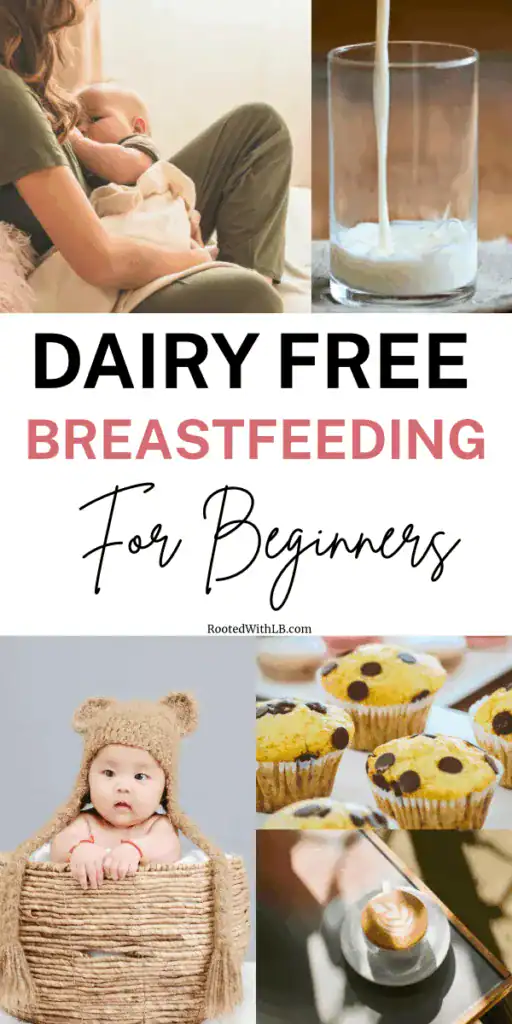
FAQ: Going Dairy-Free While Breastfeeding
How Long Does it Take Dairy to Leave Your System When Breastfeeding?
It can take up to three weeks for symptoms to fully improve in your baby after you go dairy-free while breastfeeding⁶.
Should I avoid foods labeled “processed in a facility with milk”?
If your baby has CMPA, yes. For intolerances, maybe. Some babies are not affected by trace amounts of milk, while others are. Always consult your pediatrician.
Do I Need To Avoid Soy Too?
Maybe. Up to 50% of dairy-sensitive babies also react to soy⁶.
When Can I Reintroduce Dairy?
Usually between 6-12 months, with guidance from your pediatrician.
What Foods Have Hidden Dairy?
- Cheese
- Butter
- Yogurt
- Ice Cream
- Whey (In many protein powders, baked goods, and snacks)
- Casein and Caseinates
- Milk Powder/Milk Solids (this is in many processed foods)
- Condensed and Evaporated Milk
Sources
1. Mayo Clinic. Lactose Intolerance. Retrieved from https://www.mayoclinic.org/diseases-conditions/lactose-intolerance/symptoms-causes/syc-20374232
2. Royal Children’s Hospital Melbourne. (n.d.). Non-IgE-mediated food allergy. Retrieved from https://www.rch.org.au/clinicalguide/guideline_index/Non-IgE_mediated_food_allergy/
3. Sicherer, S. H., & Sampson, H. A. (2018). Cow Milk Allergy. In StatPearls. National Center for Biotechnology Information. Retrieved from https://www.ncbi.nlm.nih.gov/books/NBK542243/
4. WebMD. (2024). Breastfeeding an Infant With Cow’s Milk Allergy. Retrieved from https://www.webmd.com/baby/milk-allergy-breastfeeding
5. Medical News Today. (2023). Dairy allergy rash in newborns: What to know. Retrieved from https://www.medicalnewstoday.com/articles/dairy-allergy-rash-newborn#symptoms
6. La Leche League. (2023) CMPI. Retrieved from https://llli.org/breastfeeding-info/cmpi/
